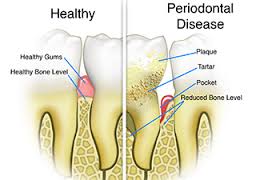Gum disease – otherwise known as periodontal disease – is an infection of the tissues surrounding the teeth. Although it’s the leading cause of tooth loss in adults, it’s often misunderstood. Let’s consider four common misconceptions about gum disease — and the truth behind the myths:
No cavities means no gum disease. Many people mistakenly believe that gum disease and cavities go hand in hand. While they do sometimes occur together, that’s not always the case. Being cavity-free doesn’t necessarily mean that you’re also free of gum disease, so it’s important to visit your dentist regularly for preventive cleanings and check-ups.
If I have gum disease, I will lose my teeth. Gum disease and tooth loss are synonymous, right? Sometimes, but not always. In fact, when caught in its earliest stage– known as gingivitis– gum disease is reversible. When allowed to progress to its more advanced stage, periodontitis, tooth loss does commonly occur. Thus, it’s essential to detect and treat gum disease early on.
Gum disease is rare, so I don’t have to worry about it. Gum disease is one of the most common oral health concerns facing adults today. In fact, approximately half of adults over the age of 30 currently suffer from gum disease. Understanding how commonly gum disease occurs is an important step in the prevention process.
Bleeding gums are normal. One of the earliest signs of gum disease is bleeding gums, and particularly gums that bleed during brushing. Many people mistakenly assume that a little blood on their toothbrush is no big deal. Healthy gums do not bleed, so it’s important to visit your dentist right away if you notice frequent bleeding during brushing. Other signs of gum disease include gums that are red and inflamed; tender or receding gums; and chronic bad breath.
If you think you might be suffering from gum disease, contact us today to learn how we can help!
